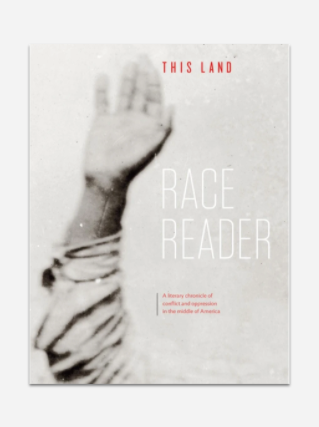The Race Reader
Racism is America's original sin, and we still struggle to understand it. Throughout more than one hundred issues, This Land magazine published on topics spanning from the Tulsa race riot of 1921 to the ongoing struggle of black descendants of Cherokee Freedmen. The Race Reader anthologizes our most courageous work on the subject. This collection illuminates the devastating historical, cultural and personal toll that racism takes from society. And it offers the hope that through understanding, reconciliation is possible.
"This anthology should be in, at the very least, every school in Oklahoma. The editors of This Land, committed to giving voices to the past, have over the years compiled a deeply researched and eloquent antidote to a legacy of intolerance. The Race Reader anatomizes our most complicated truths—especially those that so many in power did their utmost to deny."
—Mark Singer (staff writer, The New Yorker)
Dreams of a Black Oklahoma: E. P. McCabe was an obscure Kansas politician who had a vision of Oklahoma to become a haven for former slaves as the only all-black state in the union. But when recruiters from Canada prompted a black exodus, settlers found our northern neighbors to be just as cold and racist. By Russell Cobb.
A Conspiracy of Silence: A poorly attended candlelight vigil 90 years after the Tulsa’s 1921 pogrom begs the question of why our history isn’t better known. A journalist outlines how whites didn’t want to stain the fabric of their bustling oil capital, while the black community feared for those who committed unpunished crimes. By J. Kavin Ross.
Curriculum Counts: An infographic based on our survey of what Tulsans learned about Greenwood in school. By Hannibal B. Johnson.
The Nightmare of Dreamland: In 1921, a mob from Tulsa’s white community attacked Greenwood, the most affluent black community the United States at the time, after Dick Rowland, a black man, was accused of assaulting Sarah Page, a white woman. The violence that followed left hundreds dead and thousands displaced. By Lee Roy Chapman.
The Unlikely Baroness: Sarah Rector, who was born in Indian Territory into a poor family of Creek Freedmen, received an allotment of land unsuitable for farming through the Dawes Act. By the time she was an adolescent, she’d become rich off the oil that flowed beneath it. By Steve Gerkin.
Steps to Nowhere: Though north Tulsa’s residents rebuilt their community after 1921, relentless bureaucracy, faulty projections, and bad urban design of the 1950s and ‘60s would be the final death knell for Tulsa’s Northside neighborhoods. By Michael Bates.
The Trouble With Henry: At a 1938 football game in Sand Springs, the Dewey Bulldoggers turned their backs on 4,000 fans in support of Henry Kemps, who was not allowed to enter the stadium because of his race. By Anne Barajas Harp.
From One Fire: In 2003, David Cornsilk, a self-taught civil rights advocate and genealogist, became a lay advocate for descendants of Cherokee Freedmen and their fight for tribal citizenship. While homeless and working full-time at Petsmart, Cornsilk devoted years to a landmark court case that would expose the tension between Native American identity and tribal sovereignty. By Marcos Barbery.
Among the Tribe of the Wannabes: How Iron Eyes Cody made a career out of pretending to be Indian, and why white people continue to fashion Native identities out of thin air. By Russell Cobb.
Youngwolfe Accused: In a family story reminiscent of To Kill a Mockingbird, Tulsa attorney Bill Howe risked his career and reputation to exonerate Buster Youngwolfe, a young Cherokee man accused of the rape and murder of an adolescent girl in the 1950s—a time when neither forensic technology nor Native-American cultural barriers would be on his side. By Hunter Howe Cates.
In My Tribe: An personal essay reflecting on multiculturalism and identity, family and relationships. By Jezy J. Gray.








